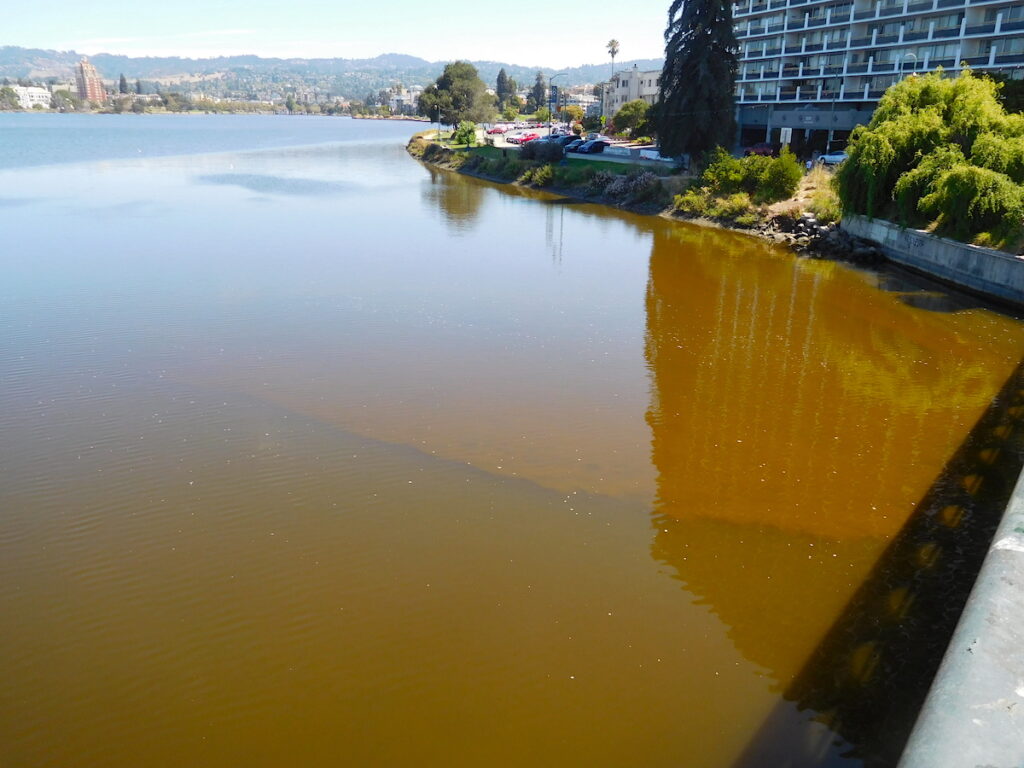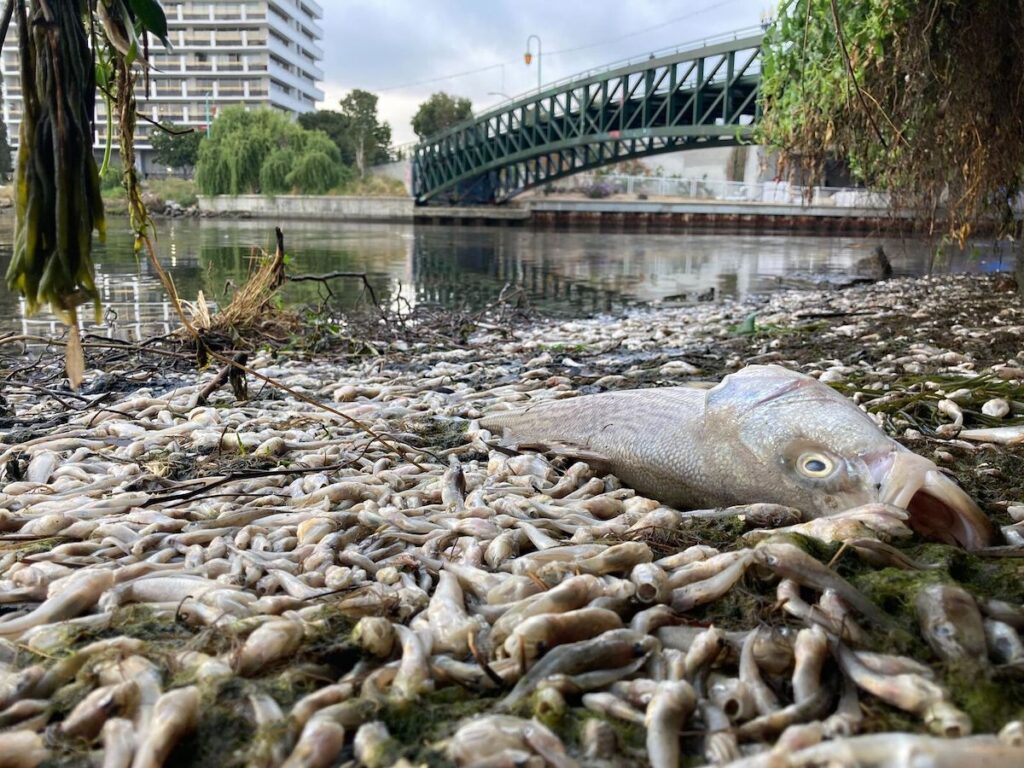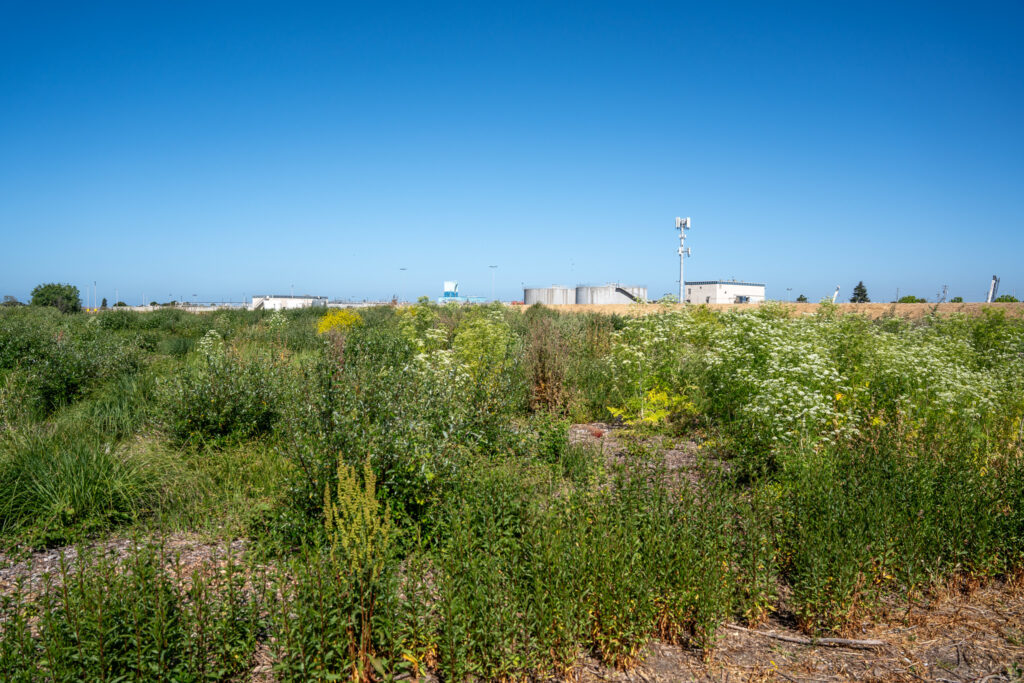In the summer of 2022, people across the Bay Area were shocked to see the water of the Bay darken into a deep reddish-brown color. Not long after, dead fish started washing up along the Bay’s shoreline. The shores of Lake Merritt in Oakland (which is tidally connected to the Bay) were covered in dead anchovies. It’s estimated that around 10,000 fish were killed in total.


Thankfully this type of event, called a harmful algae bloom (HAB), is uncommon in the San Francisco Bay, but the frequency is increasing and that’s a cause for concern. In addition to threatening wildlife, these kinds of outbreaks can cause illness for anyone who comes into contact with the water. The reason that these events are likely to be more common in coming years has to do with the impacts of people and climate change. One we have the power to control, the other we have to adapt to.
You’re toxic, I’m slippin’ under
Nutrients, primarily nitrogen, feed algae and are discharged into the Bay from more than 30 wastewater treatment plants that serve over 7 million residents. Despite discharging high levels of nitrogen continuously over the past decades, San Francisco Bay has largely been protected from HABs due to the nature of the Bay itself. Frequent tidal mixing flushes algae from the Bay. Sediment flows from the Central Valley and cause the water to be murky, preventing sunlight from penetrating deeper into the water. Cool water temperatures also keep algae from growing to toxic levels. But climate change is altering that balance.
Water temperatures are creeping up, and the murkiness of the water is decreasing. This allows for more algae growth, and when coupled with the amount of nitrogen added to the water, we have a toxic recipe for disaster. If we’re going to keep these algae blooms in check as the climate changes, we have to adjust how we manage wastewater in the Bay. To that end, we need new rules around what water treatment plants are allowed to discharge.
New Water Board Permit
Great news came earlier this month when the San Francisco Regional Water Quality Control Board (Water Board) issued an updated nutrient discharge permit. The new permit requires all wastewater agencies to collectively cut nutrient discharges by about 40% over the next ten years. This is the first time that the Water Board has required specific reductions in the amount of nutrients discharged into the Bay. Save The Bay staff attended the Water Board meeting and spoke in favor of the new permit requirements.
We are hopeful that the new requirements will lead wastewater agencies to invest in innovative ways to remove nutrients, including nature-based approaches. Save The Bay has partnered with agencies to study ways to filter wastewater through horizontal levees, where native vegetation helps remove the nitrogen before it enters the Bay. These are also a great example of a project that provides multiple benefits – improving water quality, increasing flood protection, and providing native habitat.

We are faced with a growing list of climate adaptation needs as warming air and water temperatures and rising tides pose risks to our communities. We can’t risk regular toxic algae blooms becoming the norm alongside wildfires, extreme storms, and flooding. We are hopeful that the Water Board’s action will help ensure that the 2022 algae bloom and fish kill was an unfortunate, and unusual, occurrence.

















































